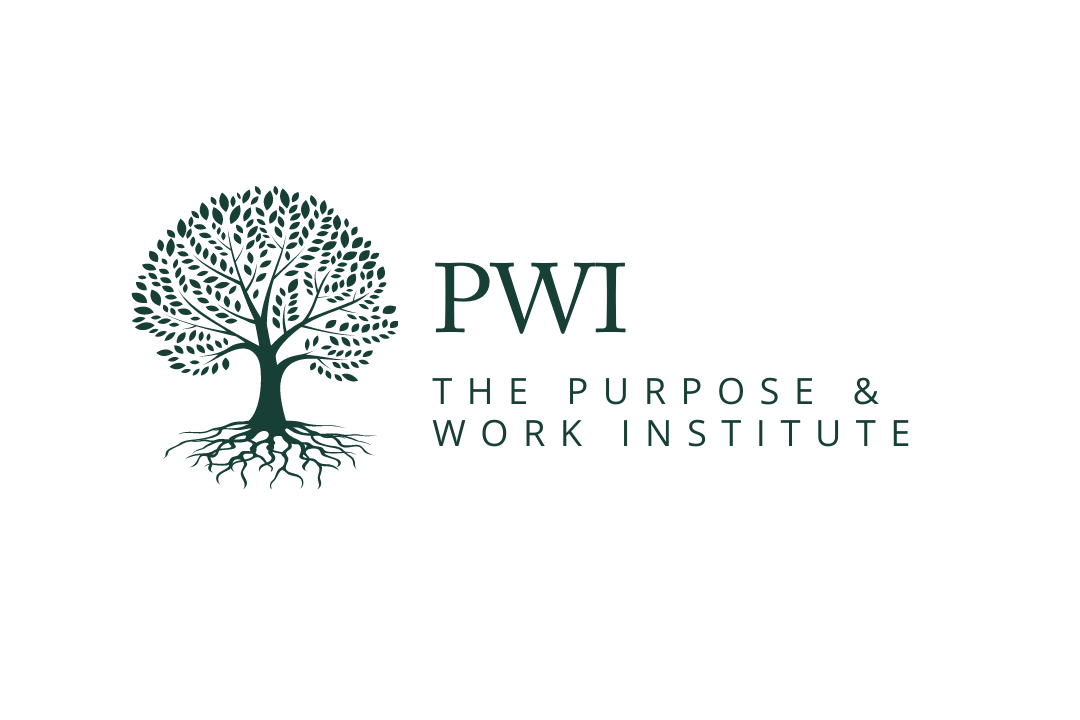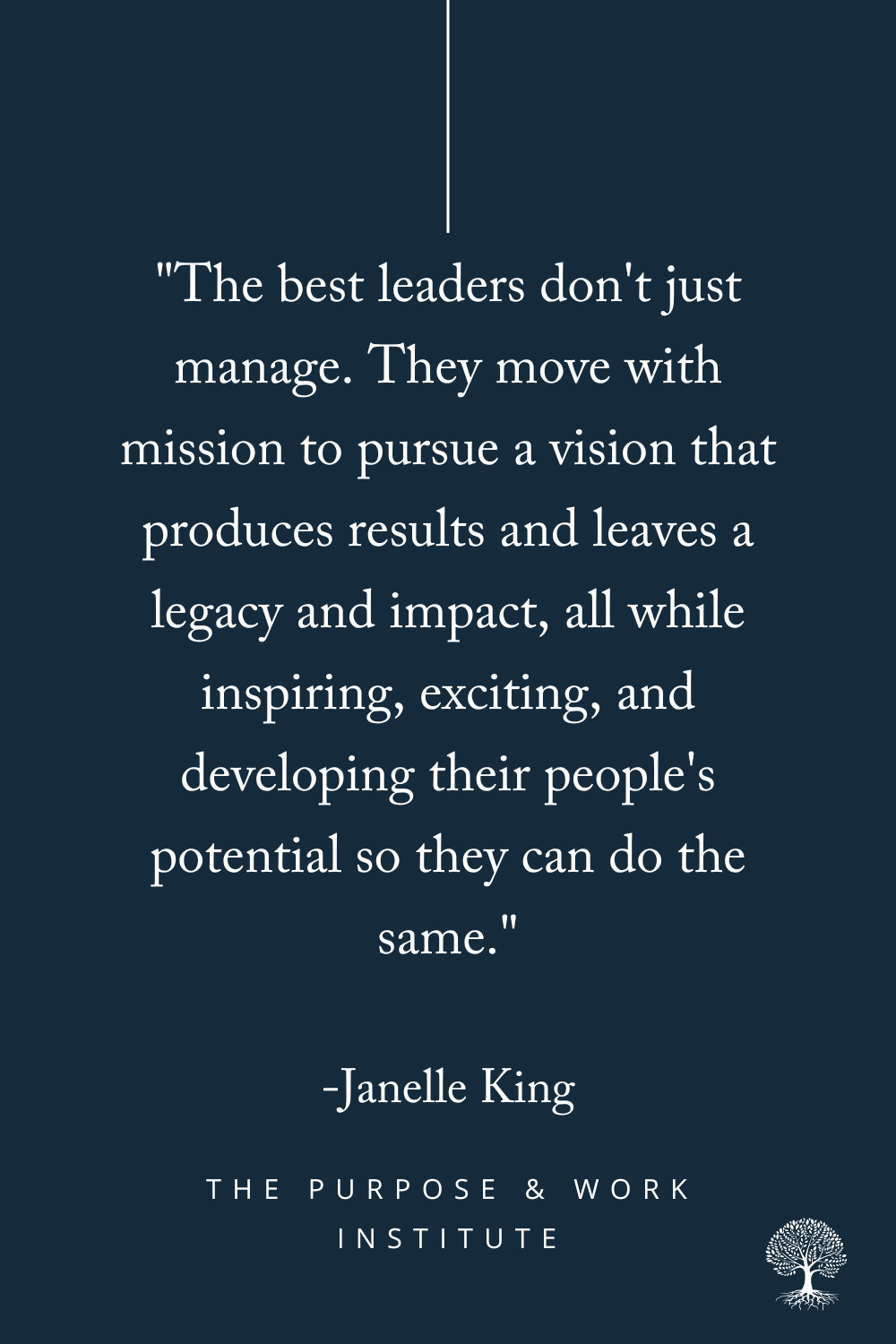Leading with Purpose & Vision
"Where are we going?" This is a question of vision and unfortunately remains unanswered by many leaders. When Leadership IQ assessed over 21,000 employees on their leaders' effectiveness, they discovered that over 71% of managers were not aligned with the organization's vision. Not only are they not aligned with the company's vision, but they also fail to have a personal vision that guides their leadership. Leaders spend roughly only 3% of their time envisioning and planning for the future and enlisting their people to behold, share, invest, and execute the vision. However, it is this ability that distinguishes leaders from non-leaders, leaders from simply just managers.
Vision not only impacts organizational performance but group effectiveness and growth. It's the spark that can take work from mundane to meaningful. While a company's purpose serves as its foundation, the vision provides direction or a blueprint to work toward a credible, realistic, and inspiring future. Anyone can convey orders, information, and deadlines, but can you galvanize and encourage others to pursue a shared purpose and leave an impact? Can you influence and inspire your people to grow to their fullest potential so they can best serve your vision? The best leaders don't just manage. They move with mission to pursue a vision that produces results and leaves a legacy and impact, all while inspiring, exciting, and developing their people's potential so they can do the same. Here's how you can lead with more purpose and vision as a leader.
Discover your purpose.
A part of having a clear direction in your work and leadership starts with having a clear direction in your life. Purpose and vision provide clarity and direction. Your purpose is found where your design, passions, experiences, and calling/impact meet together in the middle. It is the essence of your existence. One way to get clear on what your purpose could be is by asking yourself, "How is someone's life improved by my existence and how do I envision myself making an impact on their life?" This personal purpose and vision should translate into your life and work.
Align your purpose and vision with that of the organization.
Once you are clear on your purpose and vision, seek to align them with the organization. What are your organization's purpose and vision? What is the reason it exists? Who does it serve? What is it aiming to accomplish? What is its vision for the future? How do your purpose and vision fit in with the organization? Answering these questions enables you to move beyond your personal purpose to create shared purpose where everyone is aligned and moving toward the same goal.
Identify your style.
Along with clarifying your purpose and vision, identifying your leadership style is just as important. Your leadership style is defined by directive behaviors ( giving directions, setting goals and strategy, creating evaluation methods, establishing timelines, and defining roles) and supportive behaviors (asking for feedback, problem-solving, praising, cultivating connection, and listening) that are demonstrated to influence, inspire, and guide others to reach a goal (Blanchard, 2013). Leadership style can be broken down into four categories that combine both leadership behaviors. A directing style is a high-directive-low supportive style, where a leader may focus more time on communicating goals and less time offering support. A coaching style is a high-directive-high-supportive style where a leader focuses on both communicating and achieving goals while tending to their people's social-emotional needs. If you find yourself drawing out and leveraging your people's skills to accomplish goals rather than focusing exclusively on the goals themselves, you may have more of a supportive style using high-supportive-low-directive behaviors, while the leader who offers minimal direction and little to no support may utilize a delegating style characterized by a low-directive-low-supportive style. While you may have a primary leadership style, you may find that you may utilize various leadership styles based on the situation, the person, and that person's competence. The most effective leader is self-aware of their style, recognizes their people's needs, purpose, and potential, and develops themself to serve and pour into their people.
Cast the vision for your personal leadership.
While you must be clear on your organization's vision, it's equally vital that you are clear on your personal vision for your leadership as well. Ask yourself:
What kind of leader do I envision myself being?
What kind of impact do I wish to make as a leader? (Think organizationally but individually as well)
Who do I need to become to operate as that leader?
Once you've answered these questions, use your insights to create your personal leadership development plan, highlighting the goals and skills you wish to develop as a leader.
Share your vision with your people.
Once you are clear on the organization's and your personal vision, don't just keep it to yourself. Share it with your people. A wise Scripture says "without vision, the people perish." Vision not only gives direction but hope. People want to know what they are working toward and why it matters. They also want to feel recognized and included in the process. This is why it's critical to get your people's feedback in the process. Don't only share your vision, have them share their vision and how they would like to contribute as well. Sharing the vision not only ensures that your people's values, aspirations, and well-being are being acknowledged and reflected but creates a sense of purpose while fostering ownership and commitment, which encourages positive productivity and performance.
Draw out your people's purpose and potential.
A great leader recognizes that they are there to serve their people as they serve the vision. One of the best ways you can serve your people is by nurturing their potential. Draw out their purpose and passions. How can you help them integrate their purpose and passions into their work? What strengths and skillsets do they possess that can serve as an asset to your team and projects? At the Purpose & Work Institute, we offer coaching, training, and job crafting solutions designed to help professionals uncover their purpose, identify their strengths, and channel them into meaningful work. The more you can unlock your people's purpose and utilize their gifts at work, the more likely they will be fulfilled, committed and engaged in their work.
Have you taken time to envision how you want to show up as a leader? The best leaders not only lead forward with clear purpose and vision; they consider ways they can serve and pour into their people so they are encouraged and equipped to carry out the vision. At the Purpose and Work Institute, we offer executive and leadership coaching solutions for leaders who wish to lead and work with more meaning, purpose, and intention. Click the button below to apply for a complimentary consultation and learn more.


